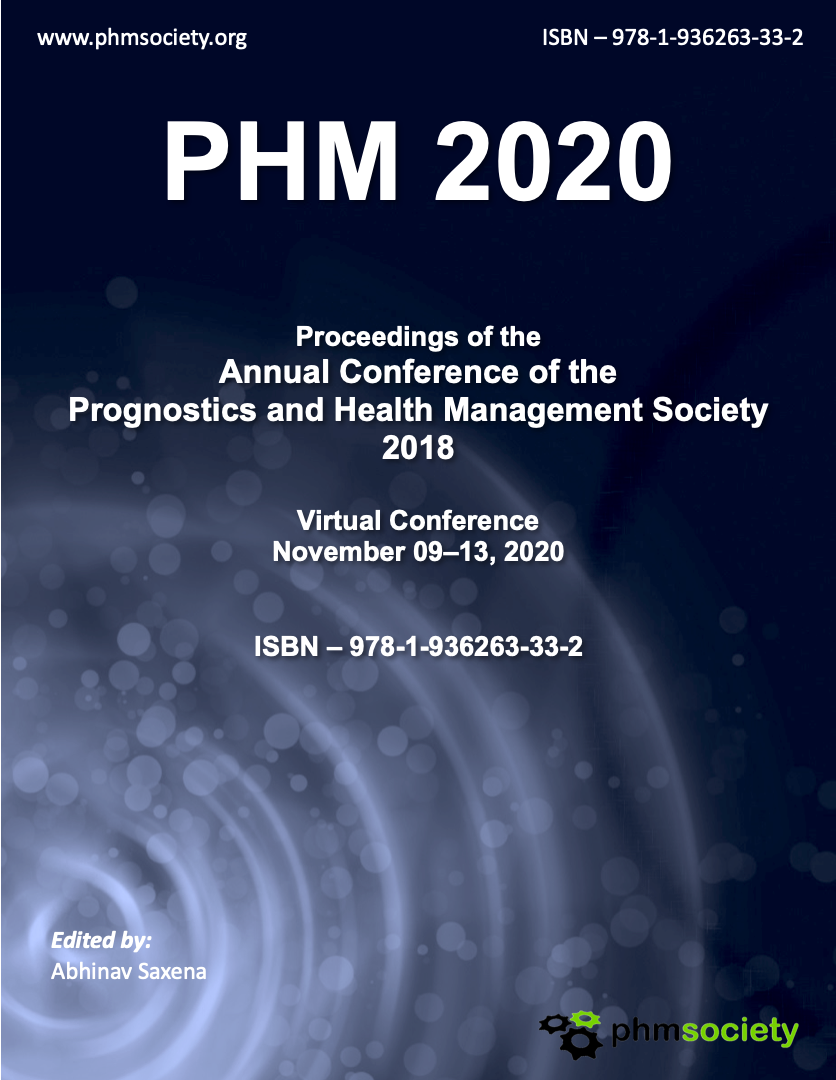A Hybrid Learning Approach to Prognostics and Health Management Applied to Military Ground Vehicles Using Time-Series and Maintenance Event Data
##plugins.themes.bootstrap3.article.main##
##plugins.themes.bootstrap3.article.sidebar##
Abstract
Attempts to leverage operational time-series data in Condition Based Maintenance (CBM) approaches to optimize the life cycle management and Reliability, Availability, and Maintainability (RAM) of military vehicles have encountered several obstacles over decades of data collection. These obstacles have beset similar approaches on civilian ground vehicles, as well as on aircraft and other complex systems. Analysis of operational data is critical because it represents a continuous recording of the state of the system. Applying rudimentary data analytics to operational data can provide insights like fuel usage patterns or observed reliability of one vehicle or even a fleet. Monitoring trends and analyzing patterns in this data over time, however, can provide insight into the health of a vehicle, a complex system, or a fleet, predicting mean time to failure or compiling logistic or life cycle needs. Such High-Performance Data Analytics (HPDA) on operational time-series datasets has been historically difficult due to the large amount of data gathered from vehicle sensors, the lack of association between clusters observed in the data and failures or unscheduled maintenance events, and the deficiency of unsupervised learning techniques for time-series data. We present an HPDA environment and a method of discovering patterns in vehicle operational data that determines models for predicting the likelihood of imminent failure, referred to as Parameter-Based Indicators (PBIs). Our method is a data-driven approach that uses both time-series and relational maintenance data. This hybrid approach combines both supervised and unsupervised machine learning and data analytic techniques to correlate labeled, relational maintenance event data with unlabeled operational time-series data utilizing the DoD High Performance Computing (HPC) capabilities at the U.S. Army Engineer Research and Development Center. In leveraging both time-series and relational data, we demonstrate a means of fast, purely data-driven model creation that is more broadly applicable and requires less a priori information than physics informed, data-driven models. By blending these approaches, this system will be able to relate some lifecycle management goals through the workflow to generate specific PBIs that will predict failures or highlight appropriate areas of concern in individual or collective vehicle histories.
How to Cite
##plugins.themes.bootstrap3.article.details##
PHM, CBM, Condition based maintenance, ground vehicle, maintenance, life cycle management, sustainment, RAM, reliability, HPC, high performance computing, HPDA, high performance data analytics, parameter-based indicator, time series data, sensor data, maintenance data

This work is licensed under a Creative Commons Attribution 3.0 Unported License.
The Prognostic and Health Management Society advocates open-access to scientific data and uses a Creative Commons license for publishing and distributing any papers. A Creative Commons license does not relinquish the author’s copyright; rather it allows them to share some of their rights with any member of the public under certain conditions whilst enjoying full legal protection. By submitting an article to the International Conference of the Prognostics and Health Management Society, the authors agree to be bound by the associated terms and conditions including the following:
As the author, you retain the copyright to your Work. By submitting your Work, you are granting anybody the right to copy, distribute and transmit your Work and to adapt your Work with proper attribution under the terms of the Creative Commons Attribution 3.0 United States license. You assign rights to the Prognostics and Health Management Society to publish and disseminate your Work through electronic and print media if it is accepted for publication. A license note citing the Creative Commons Attribution 3.0 United States License as shown below needs to be placed in the footnote on the first page of the article.
First Author et al. This is an open-access article distributed under the terms of the Creative Commons Attribution 3.0 United States License, which permits unrestricted use, distribution, and reproduction in any medium, provided the original author and source are credited.
